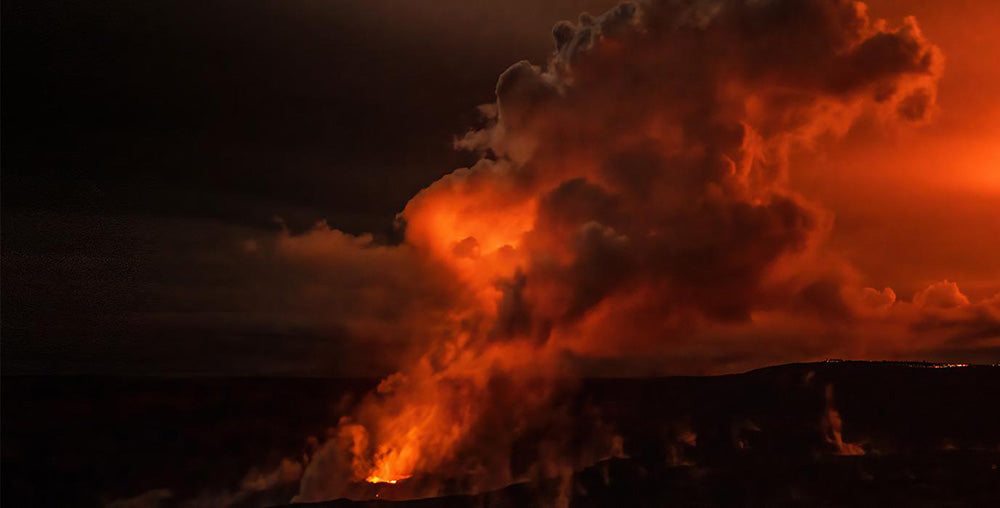
Venture into the Belly of the Earth: Unleashing Hawaii Volcanoes National Park's Fiery Wonders!
Robert DeckerAre you ready to embark on a journey that's literally groundbreaking? Then prepare to venture into the heart of the Pacific where the Earth's raw power takes center stage. Welcome to Hawaii Volcanoes National Park, the explosive paradise where fiery landscapes meet verdant rainforests, all against the backdrop of a glistening Pacific Ocean. From witnessing the raw spectacle of an erupting volcano, to exploring the primordial rainforests and the haunting beauty of volcanic craters, this national park offers a primal adventure that shakes up the traditional idea of a Hawaiian getaway. Strap in and join us as we uncover the secrets of this unique volcanic wonderland, reminding you why Mother Nature remains the most exciting showrunner of all!
Volcanoes are monuments to Earth's origin, evidence that its primordial forces are still at work. During a volcanic eruption, we are reminded that our planet is an ever-changing environment whose basic processes are beyond human control. As much as we have altered the face of the Earth to suit our needs, we can only stand in awe before the power of an eruption.
Established in 1916, Hawai’i Volcanoes National Park is located in the U.S. state of Hawaii on the island of Hawaii. It encompasses two active volcanoes: Kīlauea, one of the world’s most active volcanoes, and Mauna Loa, the world’s most massive shield volcano. The park provides scientists with insights into the birth of the Hawaiian Islands and ongoing studies into the processes of volcanism. For visitors, the park offers dramatic volcanic landscapes as well as glimpses of rare flora and fauna.

Kīlauea and its Halemaʻumaʻu caldera were traditionally considered the sacred home of the volcano goddess Pele, and Hawaiians visited the crater to offer gifts to the goddess. In 1790, a party of warriors (along with women and children who were in the area) were caught in an unusually violent eruption. Many were killed and others left footprints in the lava that can still be seen today.
Volcanoes are also prodigious land builders - they have created the Hawaiian Island chain. Kīlauea and Mauna Loa, two of the world's most active volcanoes, are still adding to the island of Hawaiʻi. Mauna Loa is the most massive mountain on Earth occupying an estimated volume of 19,999 cubic miles. The current summit of Mauna Loa stands about 56,000 feet above the depressed sea floor. This is more than 27,000 feet higher than Mount Everest. In contrast to the explosive continental volcanoes, the more fluid and less gaseous eruptions of Kīlauea and Mauna Loa produce fiery fountains and rivers of molten lava. These flows, added layer upon layer, produced a barren volcanic landscape that served as a fountain for life. Hundreds of species of plants and animals found their way across the vast Pacific on wind, water, and the wings of birds. A few survived, adapted, and prospered during this time of isolation. The arrival of humans - first Polynesians, then Europeans - and the plants and animals they brought with them drastically altered this evolutionary showcase, this grand natural experiment.
Today Hawaiʻi Volcanoes National Park displays the results of at least 70 million years of volcanism, migration, and evolution in the Hawaiian Island-Emperor Seamount chain-processes that would thrust a bare land from the sea and clothed it with complex and unique ecosystems and a distinct human culture. Created to preserve the natural setting of Kīlauea and Mauna Loa, the park is also a refuge for the island's native plants and animals and a link to its human past. Park managers and scientists work to protect the resources and promote understanding and appreciation of the park visitors. Research by scientists at the Hawaiian Volcano Observatory makes Kīlauea one of the best understood volcanoes in the world, shedding light on the birth of the Hawaiian Islands and the beginnings of planet Earth. Each eruption is a reminder of the power of natural processes to change the air we breath, the ground we walk on, and the sea that surrounds this volcanic island we call home.
About the Hawai’i Volcanoes National Park Poster
The Hawai’i Volcanoes National Park Poster measures 13″ x 19″ and is an original work by Robert Decker. The poster is based on a photograph he took at the Halemaʻumaʻu caldera just after sunset. The posters are printed on “Conservation,” a 100% recycled, domestically produced (80 lb.) paper stock with soy-based inks. From start to finish, each poster is 100% American Made.
Join the growing community of 80k+ National Park enthusiasts to receive insider deals and updates.

